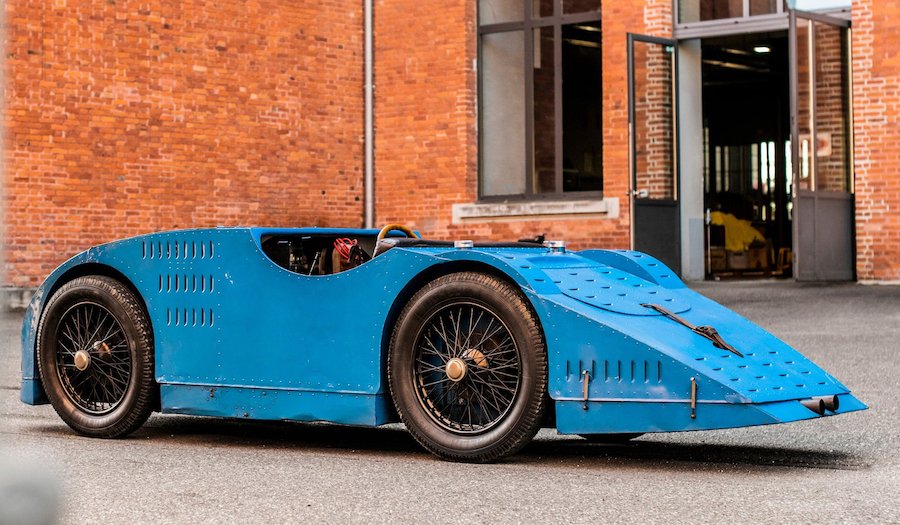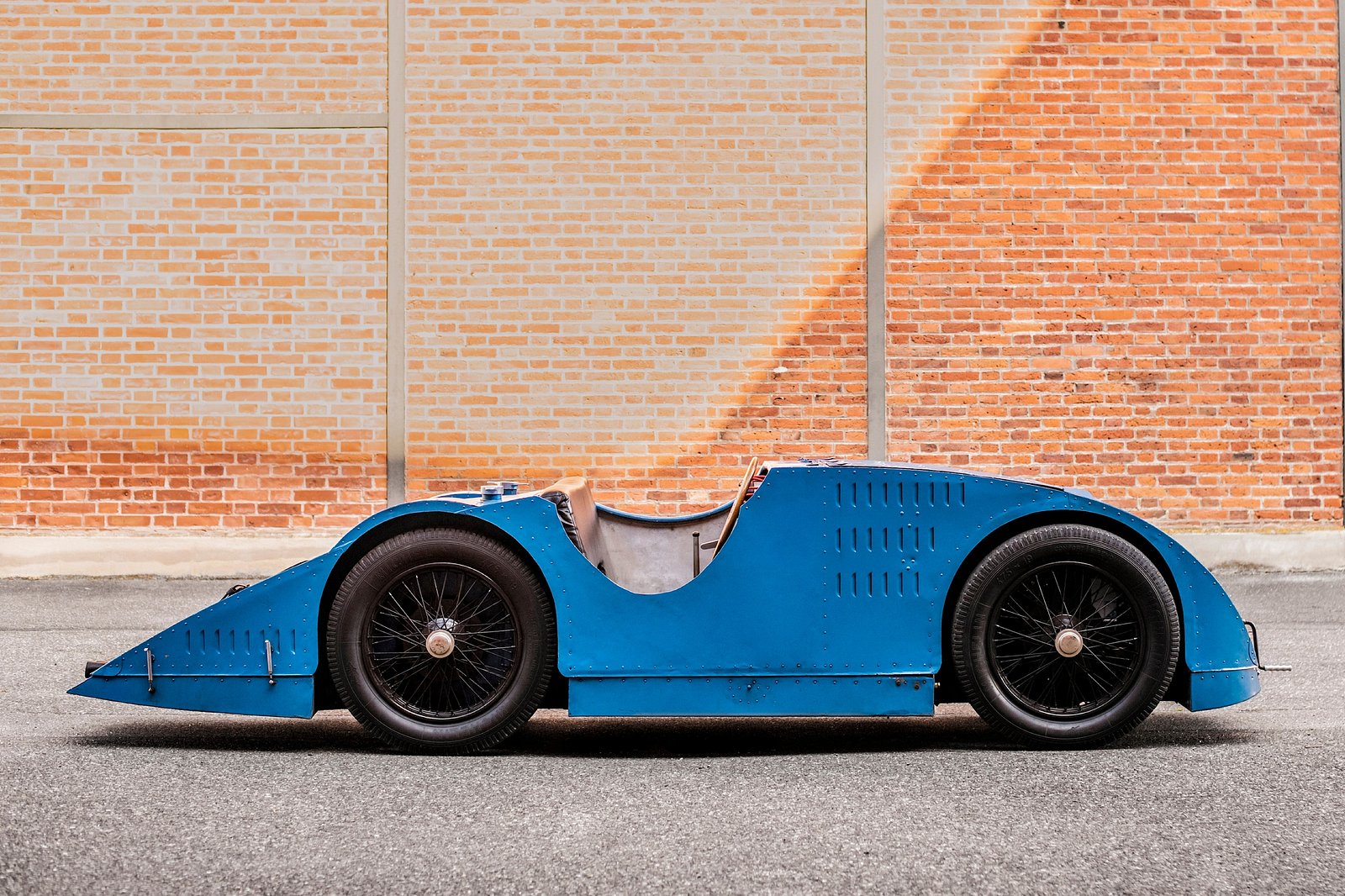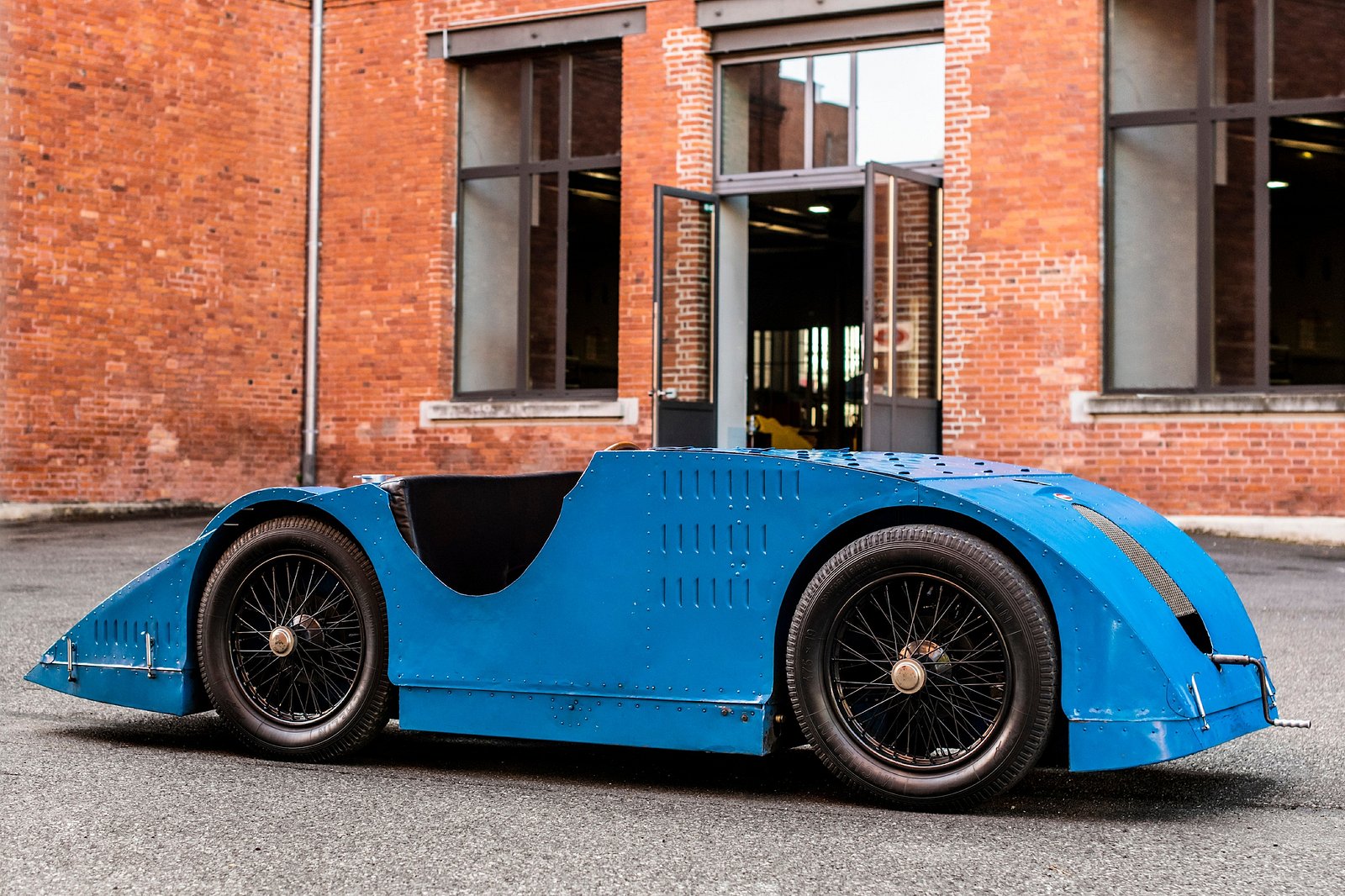Bugatti Celebrates 100 Years Of The Pioneering Type 32 "Tank"

The Bugatti nameplate is one of the most iconic in the automotive industry, thanks to icons such as the ultra-rare Type 41 Royale and Type 35 and modern hypercars like the Veyron and Chiron, but its lesser know products are deserving of our attention too. The peculiar-looking creation you see below may not be as well-known as the aforementioned models, but it's arguably one of the most important vehicles to leave Molsheim.
The Type 32 "Tank" was a trailblazer in its day, with a forward-thinking aerodynamic design that cut through the air like little else. Now, 100 years after it first debuted, Bugatti is celebrating the Tank.
Let's set the scene. 300,000 racing fans descended upon the Loire Valley on July 2, 1923, to witness the spectacular French Grand Prix. What they didn't bargain on seeing was the Type 32, which must have looked like a science fiction project to most of the crowd.
The sharp styling caught the attention of many and was designed to be as fast as possible. Inspired by an airplane wing, Bugatti believed that aerodynamic efficiency was very important in motorsports.
Despite the futuristic bodywork, the Type 32 was based on proven underpinnings from the Type 30. Powering the Tank is a 2.0-liter eight-cylinder engine that produced around 89 horsepower - a far cry from the figures Bugatti extracts from the iconic W16 engine these days.
As you'd expect from Bugatti, the Type 32 "Tank" was a sophisticated vehicle. With an underslung chassis, a three-speed transaxle transmission, and front hydraulic brakes, the Type 32 was on the cutting edge of engineering. Four cars in total took part in the Grand Prix, which covered nearly 500 miles over 35 laps.
Five cars were built (including one prototype). Of the four cars that entered the Grand Prix, French driver Ernest Friderich was the most successful, finishing the race in third position. With a time of seven hours and 22.4 seconds, Friderich managed to maintain an average speed of 69.6 mph over the duration of the race.
Sadly, the Type 32 didn't make another Grand Prix appearance, with Bugatti choosing instead to further develop the beloved Type 35. However, that's not to say that Type 32 didn't provide the automaker with useful tidbits that found their way into future vehicles. Aero clearly influences the brand today, and so does an obsession with speed.
These days, Bugatti builds some of the most desirable road cars known to man. These vehicles are built to incredibly high standards and excel in just about every area, be it performance, luxury, or straight-out speed. With a new era on the horizon, the automaker is preparing its historic HQ for the arrival of the first-ever electrified Bugatti.


Noticias relacionadas
